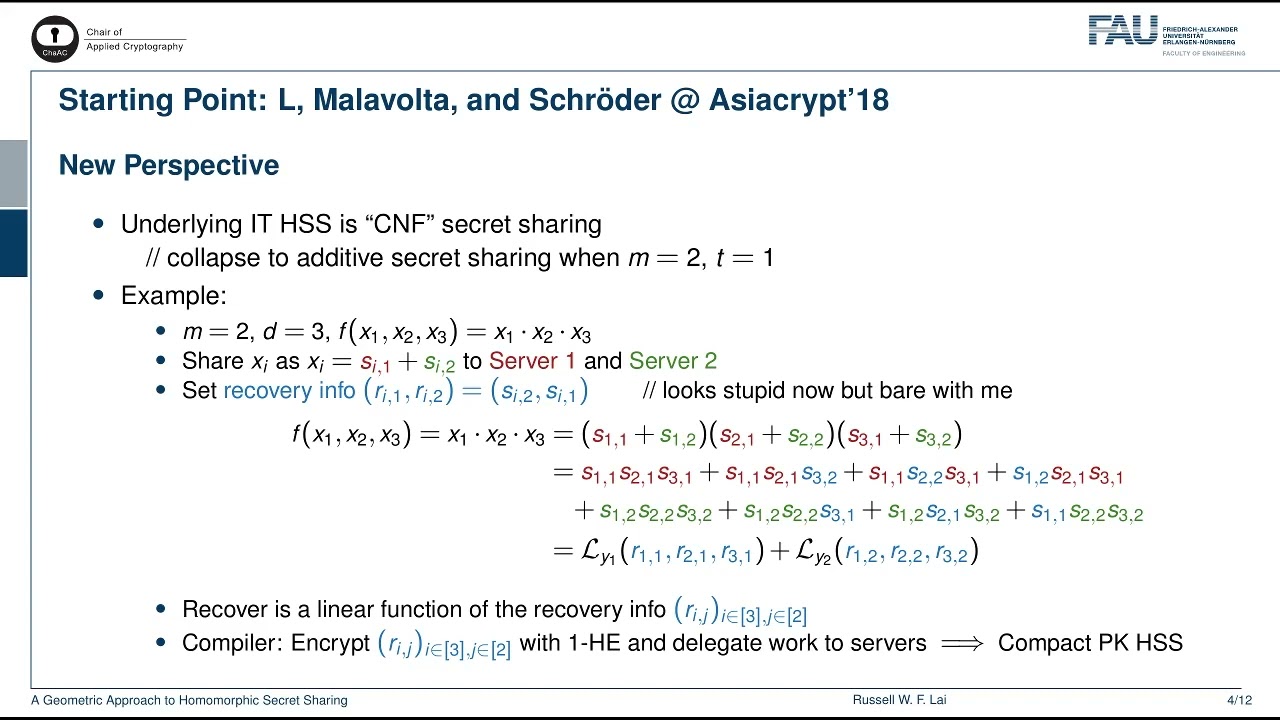Welcome to the resource topic for 2021/260
Title:
A Geometric Approach to Homomorphic Secret Sharing
Authors: Yuval Ishai, Russell W. F. Lai, Giulio Malavolta
Abstract:An (n,m,t)-homomorphic secret sharing (HSS) scheme allows n clients to share their inputs across m servers, such that the inputs are hidden from any t colluding servers, and moreover the servers can evaluate functions over the inputs locally by mapping their input shares to compact output shares. Such compactness makes HSS a useful building block for communication-efficient secure multi-party computation (MPC). In this work, we propose a simple compiler for HSS evaluating multivariate polynomials based on two building blocks: (1) homomorphic encryption for linear functions or low-degree polynomials, and (2) information-theoretic HSS for low-degree polynomials. Our compiler leverages the power of the first building block towards improving the parameters of the second. We use our compiler to generalize and improve on the HSS scheme of Lai, Malavolta, and Schröder [ASIACRYPT’18], which is only efficient when the number of servers is at most logarithmic in the security parameter. In contrast, we obtain efficient schemes for polynomials of higher degrees and an arbitrary number of servers. This application of our general compiler extends techniques that were developed in the context of information-theoretic private information retrieval (Woodruff and Yekhanin [CCC’05]), which use partial derivatives and Hermite interpolation to support the computation of polynomials of higher degrees. In addition to the above, we propose a new application of HSS to MPC with preprocessing. By pushing the computation of some HSS servers to a preprocessing phase, we obtain communication-efficient MPC protocols for low-degree polynomials that use fewer parties than previous protocols based on the same assumptions. The online communication of these protocols is linear in the input size, independently of the description size of the polynomial.
ePrint: https://eprint.iacr.org/2021/260
Talk: https://www.youtube.com/watch?v=ZhwWTt-FtCI
See all topics related to this paper.
Feel free to post resources that are related to this paper below.
Example resources include: implementations, explanation materials, talks, slides, links to previous discussions on other websites.
For more information, see the rules for Resource Topics .
